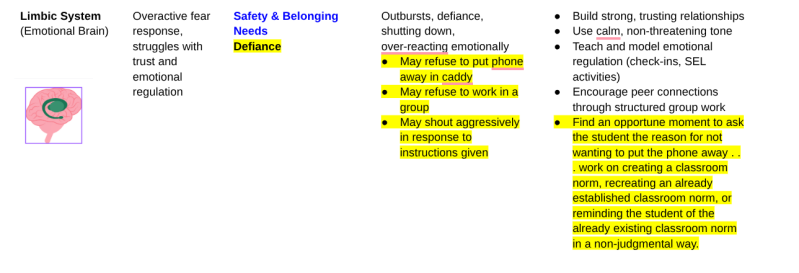Vol. 4(9)
Dr. Karlene Richardson, DHA, CDP, CDPT

Our classrooms today are filled with our students who bring more than just notebooks and laptops to school, they bring their life experiences. For some, those experiences include trauma, which can profoundly affect how the brain functions and how students behave and learn. Trauma doesn’t just live in memories; it lives in the body and brain, influencing survival instincts, emotions, decision-making, and the ability to think critically.
When teachers understand how trauma impacts different regions of the brain, the brain stem, limbic system, frontal lobe, and neocortex, they can begin to see behaviors not as defiance or disinterest, but as survival strategies. By connecting this understanding with Maslow’s Hierarchy of Needs and Dr. Richardson’s 4Ds, educators can create trauma-informed classrooms that prioritize safety, belonging, and growth. Dr. Richardson believes (2025), recognizing that these behaviors are not personal attacks but trauma memories empowers teachers to step back, deepen their empathy, and approach teaching through an empathy-based lens.
Anatomy of Trauma-Informed Teaching, highlights the brain regions most affected by trauma, the classroom behaviors teachers might notice, and practical strategies to support students in achieving both learning and self-actualization.





#TraumaInformedTeaching #TraumaInformedClassroom #EmpathyBasedTeaching #MaslowsHierarchy #SELStrategies #ClassroomManagement #StudentBehavior #TraumaAndLearning #TeacherStrategies #NeuroscienceInEducation #TraumaSupport #TeachingTips #WholeChildEducation #ExecutiveFunction #StudentSuccess

